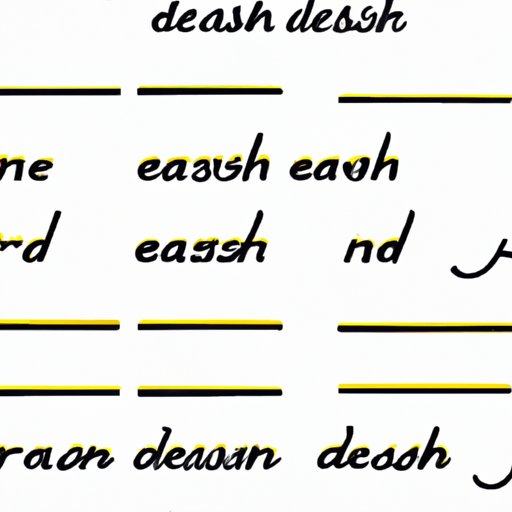Introduction
Dashes are an important part of writing that can be used to add emphasis, replace other punctuation marks, or break up long sentences. But understanding when and how to properly use dashes in writing can be tricky. Knowing when and how to use a dash is essential for effective communication and improved readability.
Exploring the Different Types of Dashes in Writing
There are three main types of dashes used in writing: the en dash, the em dash, and the hyphen. Each of these has its own purpose, rules, and guidelines for usage.
En Dash
The en dash (–) is used to indicate a range of values, such as dates, times, or numbers. It can also be used to link two words together to create a compound modifier. For example, “New York–based company” or “Monday–Friday schedule.”
Em Dash
The em dash (—) is used to set off a phrase or clause within a sentence. It can also be used to indicate a sudden break in thought or an interruption. For example, “I was going to the store — but then I remembered I had other errands to run.”
Hyphen
The hyphen (-) is used to join two or more words together to form a compound word. For example, “mother-in-law” or “well-being.” It can also be used to connect certain prefixes and suffixes to words. For example, “anti-inflammatory” or “pre-existing.”
How to Use a Dash for Maximum Effect in Your Writing
Using a dash in your writing can be a powerful tool, but it’s important to know when and how to use it for maximum effect. Here are some tips for mastering the art of using dashes in writing.
Know what kind of dash you need to use
It’s important to understand the difference between en, em, and hyphens and to know which one you need to use for a particular situation. Make sure you’re using the correct type of dash for each instance in your writing.
Consider the context of your sentence
When deciding whether or not to use a dash, consider the context of your sentence. Is the phrase or clause you’re trying to emphasize strong enough to stand on its own? If so, then a dash may not be necessary.
Avoid using too many dashes
Using too many dashes can make your writing look cluttered and confusing. Try to limit your use of dashes to only the most necessary situations.
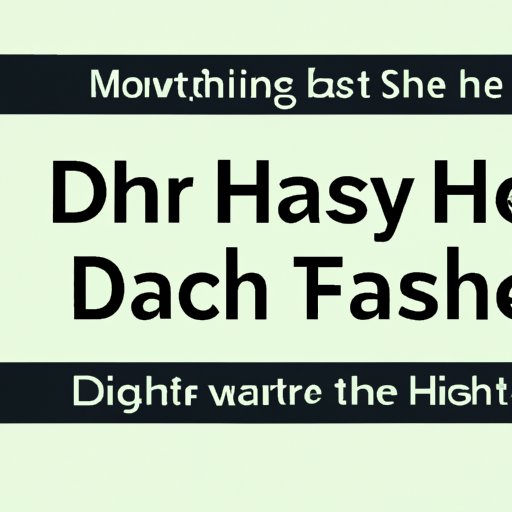
Tips for Mastering the Art of Using Dashes in Writing
Learning when and how to use a dash in writing can take some time and practice. Here are some tips to help you master the art of using dashes in writing.
Read and study examples of proper dash usage
Reading and studying examples of proper dash usage is a great way to get an understanding of when and how to use dashes in your own writing. Look for examples of effective dash usage in books, articles, and other forms of writing.
Practice using dashes in your own writing
Once you have a good understanding of when and how to use dashes, start practicing using them in your own writing. Pay attention to how the dashes affect the flow and readability of your sentences.
Be mindful of the length of your sentences
Using dashes in long sentences can make them difficult to read and understand. When possible, try to keep your sentences short and to the point.
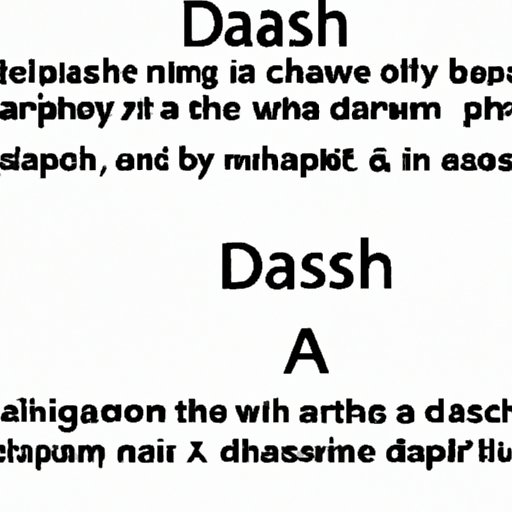
An Introduction to the Power of the Dash in Writing
Dashes can be a powerful tool in your writing if used correctly. Here are some ways in which dashes can help to create emphasis and break up long sentences.
Dashes can help create emphasis
Dashes can be used to set off a phrase or clause within a sentence to draw attention to it and emphasize its importance. Consider using a dash to help emphasize a key point in your writing.
Dashes can be used to replace other punctuation marks
In some cases, dashes can be used to replace other punctuation marks, such as commas, semicolons, or colons. This can help to make your writing more concise and easier to read.
Dashes can help break up long sentences
Using a dash can help to break up long sentences and make them easier to read. Consider using a dash to separate two independent clauses or phrases within a longer sentence.
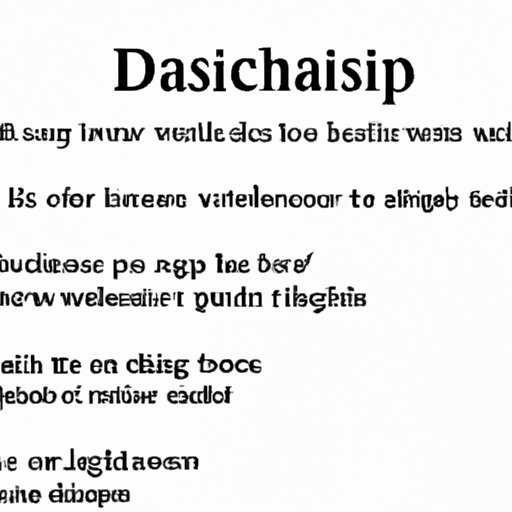
Guidelines for Appropriately Using Dashes in Writing
When using a dash in your writing, there are certain guidelines you should follow to ensure proper usage. Here are some guidelines for appropriately using dashes in writing.
Understand the difference between en, em, and hyphens
It’s important to understand the difference between en, em, and hyphens and to know which one you need to use for a particular situation. Make sure you’re using the correct type of dash for each instance in your writing.
Be aware of the context of your sentence
When deciding whether or not to use a dash, consider the context of your sentence. Is the phrase or clause you’re trying to emphasize strong enough to stand on its own? If so, then a dash may not be necessary.
Consider the length of your sentence
Using dashes in long sentences can make them difficult to read and understand. When possible, try to keep your sentences short and to the point.
Use dashes sparingly
Using too many dashes can make your writing look cluttered and confusing. Try to limit your use of dashes to only the most necessary situations.
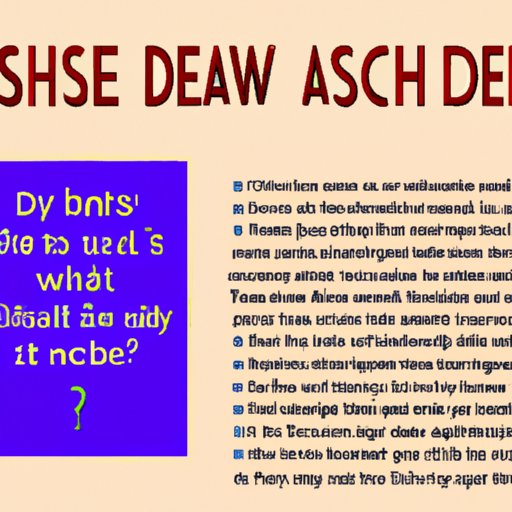
The Benefits of Knowing When and How to Use Dashes in Writing
Knowing when and how to use dashes in writing can have numerous benefits, including improved readability, clear communication, and professionalism.
Improved readability
Using dashes correctly can help to improve the readability of your writing. They can help to emphasize key points and break up long sentences, making it easier for readers to understand your writing.
Clear communication
Using dashes correctly can help to communicate your message more clearly. They can help to emphasize key points and draw attention to important phrases and clauses.
Professionalism
Using dashes correctly in your writing can give it a more professional feel. Knowing when and how to use dashes can help you to create polished and professional-looking documents.
A Comprehensive Guide to Using Dashes in Writing
Using a dash in your writing can be a powerful tool, but it’s important to know when and how to use it for maximum effect. To master the art of using dashes in writing, here’s a comprehensive guide to help you:
Understand the various types of dashes
It’s important to understand the difference between en, em, and hyphens and to know which one you need to use for a particular situation. Make sure you’re using the correct type of dash for each instance in your writing.
Learn the rules and guidelines for correctly using dashes
When using a dash in your writing, there are certain rules and guidelines you should follow to ensure proper usage. Be aware of the context of your sentence, consider the length of your sentence, and use dashes sparingly.
Practice using dashes in your own writing
Once you have a good understanding of when and how to use dashes, start practicing using them in your own writing. Read and study examples of proper dash usage and pay attention to how the dashes affect the flow and readability of your sentences.
Know the power of the dash in creating emphasis and breaking up long sentences
Dashes can be a powerful tool in your writing if used correctly. They can help to create emphasis, replace other punctuation marks, and break up long sentences.
Conclusion
Understanding when and how to use a dash in writing can be challenging, but it’s an essential skill for effective communication and improved readability. By following the rules and guidelines outlined in this article, you can master the art of using dashes in your own writing and create polished and professional-looking documents.
(Note: Is this article not meeting your expectations? Do you have knowledge or insights to share? Unlock new opportunities and expand your reach by joining our authors team. Click Registration to join us and share your expertise with our readers.)
